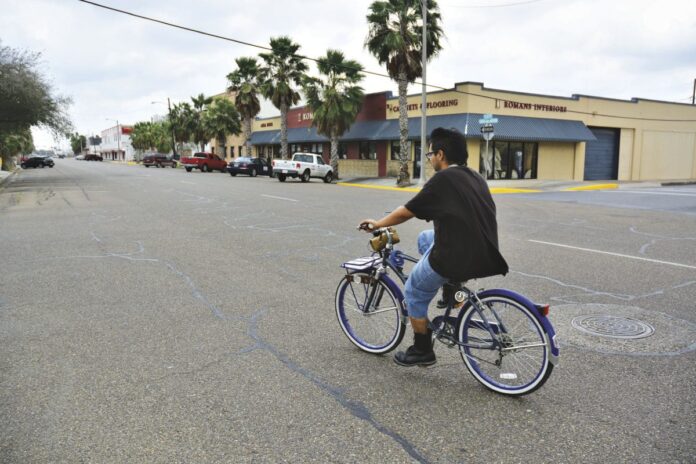HARLINGEN — City officials won’t stop attorney Ruben Peña from putting up a 35-foot-tall electronic sign next to his office building in the heart of town — even though it’s too big to comply with the downtown area’s current regulations.
Since late last month, officials planned to remove West Harrison and Jackson Avenues, from the railroad tracks to F Street, from the La Placita district’s strict boundaries just to let Peña put up his sign after they apparently mistakenly granted him a permit to install it.
But instead, officials will start allowing on-site signs along state highways such West Harrison Avenue, where Peña’s sign will hover over rows of two-story rooftops.
When officials reviewed Peña’s request, they found out the La Placita area’s boundaries didn’t reflect those drafted about 10 years ago with the passage of an amendment to the Downtown Improvement District’s ordinance, Assistant City Manager Gabriel Gonzalez has said.
So after their review, he said, officials proposed the district’s boundaries reflect the ordinance.
Late yesterday, Planning and Zoning commissioners held off on the plans to remove West Harrison and Jackson from the La Placita area’s protective boundaries known as the “overlay.”
“Initially, the idea was to change the downtown overlay boundaries,” Xavier Cervantes, the city’s Planning and Zoning director, told board members during the meeting. “But the last few days we’ve gotten a lot of feedback from the community.”
Cervantes said residents were concerned lifting the protective boundaries would threaten the area’s architecture while opening the doors to adult businesses such as tattoo parlors and smoke shops.
While some residents also feared topless bars would open, Cervantes said a city ordinance does not allow sexually orientated businesses to open in the area.
But outside of the boardroom, property owner Bill DeBrooke, who helped found the Downtown Improvement District whose regulations govern much of the La Placita area, said lifting the overlay’s protections could lead to the opening of topless bars.
Downtown victory
DeBrooke called the city’s decision to keep the protective boundaries intact a victory.
For days, he had been gathering property owners’ signatures opposing the city’s plan he argues would have led to the opening of adult businesses.
“We protected everything but the size of the sign,” DeBrooke said. “All the protections remain in place so that’s a win. That’s a fair compromise.”
How we got here
For years, DeBrooke pushed to make the La Placita area part of the downtown district to help officials better regulate businesses there.
Before the La Placita area became part of the downtown district, police struggled to control the area’s bars, said DeBrooke, who owns property in the La Placita area.
But within the downtown district’s boundaries, he said, tight restrictions have controlled the spread of adult businesses.




